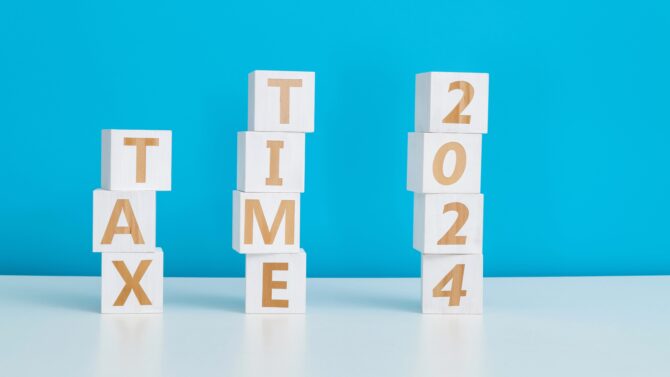
Earlier this year, I wrote about SECURE 2.0, the large piece of legislation that was signed into law in December of 2022. That article was a brief explanation of what items were passed, when they became effective and whether the change was mandatory or optional for a plan. This article will discuss some of the items that are effective as of January 1, 2024.
SECURE Act 2.0 – Catch-Up Contribution Changes
Note: On Friday August 25, 2023 Notice 2023-62 was released. The notice granted a 2 year administrative extension to this change. This is now effective for January 1, 2026.
Catch-Up Contributions made by someone who had compensation of more than $145,000 in 2023 will have to be designated as Roth contributions. Catch-Up Contributions are the amounts that are allowed for those age 50 and over that are deferred from pay throughout the year. For 2023, the deferral limit is $22,500 and the catch-up contribution limit is $7,500 (for a total of $30,000). As of the date of this article, we do not know the dollar limits for 2024.
For example, if I am 50 or older, and I make more than $145,000 this year, here are my options for 2024:
- Defer up to the maximum for people under 50 in either a pre-tax or Roth format and make no additional contributions.
- Defer up to the full amount including the catch up as a Roth contribution.
- Defer up to the maximum for people under age 50 as a pre-tax contribution and then switch to Roth contributions for the rest of the year for the catch-up amount.
As a reminder, Roth contributions are taxable now but if you leave the Roth contributions in for 5 years or longer (beginning with the first Roth contribution date), and you are 59 ½ or older when you take a distribution, the earnings are never taxable. If your plan currently does not allow for Roth contributions, you should contact your plan provider to discuss whether adding that feature is advisable at this time.
Due to the fact that several organizations requested Congress to push back the effective date of the SECURE Act 2.0 – Catch-Up Contribution change, the change has affirmatively been delayed.. This change requires programming changes for both payroll vendors and recordkeepers and thus the request for delay was granted. This will likely affect the compensation of $145,000 stated above. ML&R Wealth Management will keep you apprised if there are any other changes to the SECURE Act 2.0 – Catch-Up Contributions.
SECURE Act 1.0 and 2.0 – Long-Time Part-Time Employees
It may be required to allow part-time employees to defer from their paychecks into your plan beginning in 2024. Under SECURE 1.0 a new definition was created for what is called a Long-Term Part-Time employee (LTPT). This was defined as anyone who worked more than 500 hours for 3 consecutive years. The years prior to 2021 were disregarded so someone who worked over 500 hours in 2021, 2022 and 2023 will have to be allowed to defer from their pay starting in 2024. SECURE 2.0 has shortened that to 2 years beginning 2025. So, anyone who works 500 or more hours in 2023 and 2024 will have to be allowed to defer into the plan beginning in 2025. These LTPT employees do not need to receive any employer contributions; they only must be allowed to defer from their paycheck.
The remainder of the items that I will discuss are all new optional provisions that will be allowed in your plan in 2024. Retirement plans can adopt them into their plan provision starting January 1st, but practically speaking these options will likely be delayed due to the need for recordkeepers and payroll vendors to get their programming up to date to allow for some of the options.
SECURE Act 2.0 – Emergency Savings Accounts
Emergency savings accounts can be added as an option to your 401k plan for non-highly compensated employees. Non-highly compensated employees are employees who make below a certain dollar amount and own less than 5% of your company. This will be a separately tracked source in the plan, and the contributions will also be considered Roth dollars. This option will allow participants to save for emergencies by having an amount deposited into the plan directly from their paycheck. The maximum amount that can be saved into the account is $2,500. Participants must be allowed up to four distributions per year from the Emergency Savings account without the imposition of a fee. Since the participant cannot be charged a fee to access these funds, there are thoughts that recordkeepers may charge the plan sponsor a fee for adding this option to their plan. As of the writing of this article we do not have any concrete knowledge that recordkeepers will be charging to add these distributions.
SECURE Act 2.0 – Emergency Withdrawals
You may optionally allow participants to withdraw from the plan for emergency expenses. A plan may allow participants to withdraw up to $1,000 per year for unforeseeable emergencies. Participants can self-certify that they need the funds. This withdrawal will not be subject to the 10% early distribution penalty for those under age 59 ½. Participants may repay the withdrawal within three years. No new emergency withdrawals may be taken unless the participant repays the withdrawal, they make contributions back to the plan that are equal to the amount they have withdrawn, or three years have passed.
SECURE Act 2.0 – Distributions Due to Domestic Violence
A withdrawal option can be added for a participant that is a victim of domestic abuse by a spouse or a domestic partner up to a maximum of $10,000 or 50% of their account balance. The distribution must be taken within 12 months of the abuse. This type of distribution will not be subject to the 10% early withdrawal penalty. Participants can also self-certify that they were a victim of domestic abuse. This distribution may also be repaid to the plan within three years.
SECURE Act 2.0 – Student Loan Matching
You may elect to treat participant student loan payments as deferrals for purposes of making a match to your plan. Under the new law you can make matching contributions to your plan based on an employee’s qualified student loan payments. The same matching and vesting rules must apply to all employees, whether they are receiving a match on contributions that were made to the retirement plan or student loan payments. As an example, suppose you have two participants, one who has deferred from pay $10,000 during 2024 and another participant who has made $10,000 worth of qualified student loan payments. Let’s say your match is 50% up to 6% and both participants make the same salary, $100,000. They would both receive the same match to the retirement plan, $5,000 under this provision.
SECURE Act 2.0 – Forced Distributions for Terminated Employees
Since 1997, a plan can pay a cash out lump sum distribution to a participant without the participants consent if they have left employment with you and their account balance is $5,000 or less. SECURE 2.0 raises the cash out balance from $5,000 to $7,000. This means that participants with a vested balance of less than $7,000 who no longer work for you can be forced out of the plan without their consent.If you have any questions about SECURE Act 2.0 – Catch-Up Contributions, SECURE 2.0, or any other retirement plan matters, please feel free to contact the retirement department of ML&R Wealth Management at retirement@mlrpc.com or 512-370-3296 and we will be happy to assist you.



